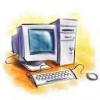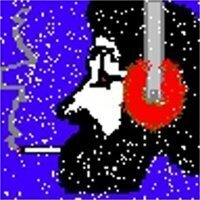Search the Community
Showing results for tags 'fstab'.
-
Most documentation, nearly all I saw, says to have your /etc/fstab entry for swap look like this and if you let most installers build your fstab for you it will look like that. A few places have documentation for swap that says to leave it blank except if you need to alter priority, say if you have swap on multiple disks. And yet others list mount options for Swap as "sw". With no listing of what flags are included when "sw" is used. I was wondering about it this week and this is what struck me. The "defaults" mount option = rw,suid,dev,exec,auto,nouser,async . Those mount options seem odd for the swap space. rw = read,write OK, we need this for Swap. suid = set user id Why does this need to be available on Swap? I don't think it does. dev = Interpret character or block special devices on the filesystem. Why does this need to be set on Swap? exec = permit execution of binaries We do not need this in Swap. auto = can be mounted with the -a option I don't think we need this for Swap. nouser = forbid ordinary users from mounting the filesystem OK, we need this for Swap. async = all I/O done asynchronously I don't think that is how Swap should work. It is supposed to be used to get things out of RAM, quickly, Anyone have opinions about this or links to explanations of what mount options to use and why?
-

How to Auto Mount Netgear ReadyShare in Linux Mint 17
mhbell posted a topic in Bruno's All Things Linux
How to Auto Mount Netgear ReadyShare in Linux Mint 17 I have a Netgear N900 WNDR3700v3 Wirless Dual Band Router, with ReadyShare. I have a USB External Hard drive attached to the router (ReadyShare) and wanted to have the USB Drive attached to the router Auto mount the drive at bootup. I accomplished this by inserting a line in my /etc/fstab file. I tried several different methods and now of them worked with Linux Mint 17 Here is what I did to solve the problem. 1. I made a directory called Public, by opening a terminal press ctrl + alt + T then type the following sudo mkdir /media/public Linux Mint 17 mounts the drive in /media, The /pubic is where the ReadyShare drives directory, which is called USB_Storage, will be mounted. 2. I then opened a Editor to edit the fstab file, in the terminal type sudo gedit /etc/fstab This will open the editor with Elevated privileges. 3. At the bottom of the fstab file place a line like this: # Auto Mount Netgear ReadyShare USB_Storage drive //192.168.1.1/USB_Storage /media/public cifs user,guest,sec=ntlm,uid=your user name goes here 0 0 Explanation: //192.168.1.1 Rather than use The Lable ReadyShare I used The IP address of the router instead. /USB_Storage The name that Netgear assigns to the directory on the readyshare drive. /media/public The mounted drive so I can access the drive on the left in my home directory. Public is what I click on to create, Delete, Read or write files and directories. cifs is the file system "sec" is the security mode and determines how passwords are encrypted between server and client ( even if you don't require passwords ). ntlm used to be the default, things change and in some cases the new one has to be used ntlmssp most NAS drives are from the old school and have to use the old one ntlm uid this is where you put your user name. A few other things. Samba or cifs utils has to be installed the # pound sign in fstab means remark and is not read when the file is executed. You put it ahead of any remarks in the file. Hope this helps someone. Mel- 2 replies
-
- 2
-

-
- netgear
- readyshare
-
(and 2 more)
Tagged with:
-

No Auto-Mounting of Removable Media In Arch {RESOLVED}
V.T. Eric Layton posted a topic in Bruno's All Things Linux
Ummm... what's up with my Arch? I found that it will not auto-mount my floppy, ZIP, CD/DVD, or USB anymore? What did the change recently that would cause this? If there was one thing that I really, really wish Arch would start doing it's that they should have some better method of notifying users of changes that may affect their systems when updating the OS. I don't know how many times I've found that an update has broken something new in Arch. It's happens pretty often to me... and some of you, I've noticed.- 41 replies
-
- auto-mounting
- fstab
-
(and 1 more)
Tagged with:

